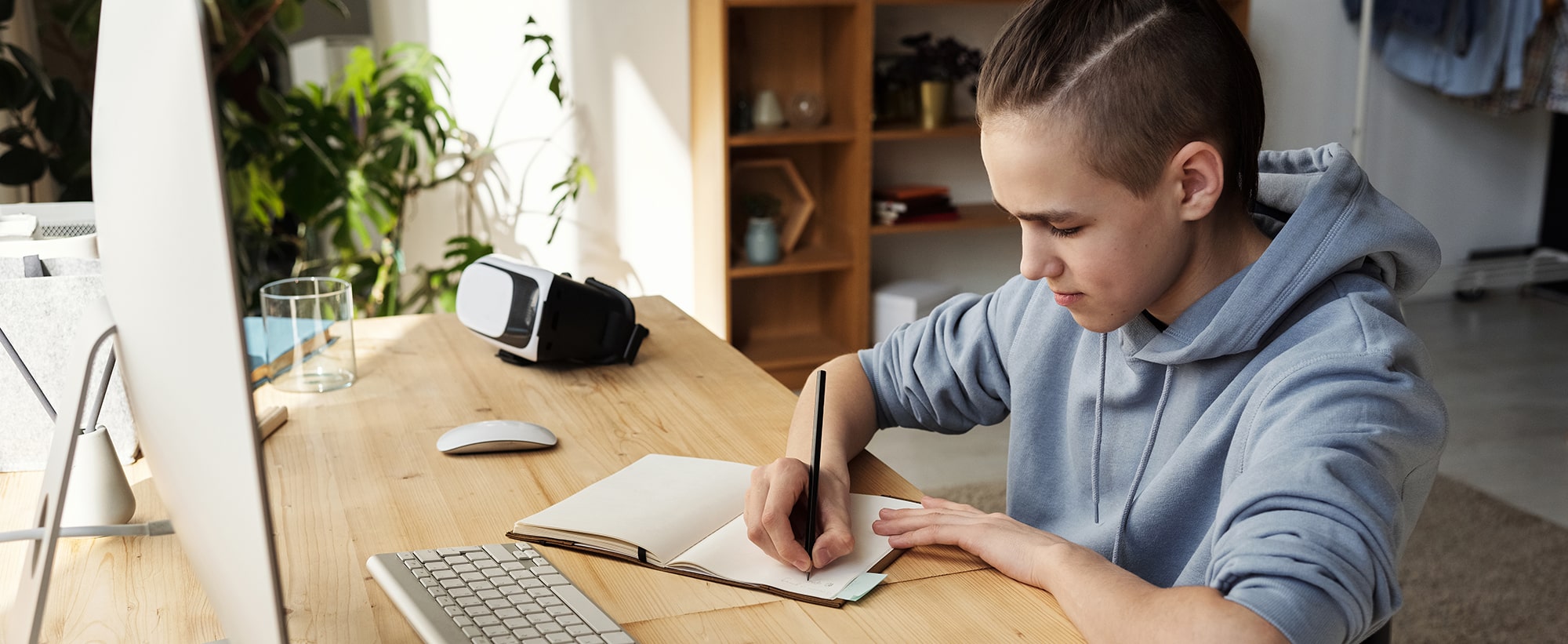
Hybrid learning
is an educational model in which some students attend class in-person, while other students join the class virtually from home. Educators teach remote and in-person students at the same time using tools like video conferencing hardware and software.
Hybrid learning commonly follows one of two designs. In one, students and families choose between in-person or remote learning. With this hybrid learning model, the same teacher will simultaneously teach a group of students who are in the classroom and a group that is online. The second option is for schools to implement a rotating system, in which students are scheduled to attend in-person classes on certain days and remote learning on others.
Many districts are working to implement the hybrid system at the middle school and high school levels. When possible, school districts are trying to keep in-person learning at the elementary level, as younger students tend to have a harder time paying attention and staying engaged remotely.
Teaching and Learning Approaches in the Hybrid System
Blended learning combines online educational and interactive materials with traditional classroom methods. This can be used as an additional resource to aid hybrid learning if student engagement declines or simply as a means to retain students’ attention and keep them active.
With the opportunities offered by the hybrid model, some teachers are turning to the method of a flipped classroom. A flipped classroom gives teachers the option to have students watch the lecture at home for homework and then have them ask questions, attend labs, and complete assignments in class. Teachers may implement a flipped classroom so that students will come to class with prior knowledge of the lesson, freeing up time during class for teachers to focus on answering questions and providing more activities and learning opportunities.
How to Get the Most Out of Hybrid Learning
If you can choose between staying home and attending class in-person, consider making a list of the pros and cons of each option before you make your final decision. Think about where you believe you will learn more. Ask yourself questions such as “Can I pay attention to online classes?”, “Do I feel comfortable attending class in person?”, and “Which learning environment would give me the best opportunity to ask questions?”
If your school is on a rotating schedule, you can benefit greatly from planning ahead for when you need to attend classes in person: make this schedule visible so you know when and what to pack.
Stay Active and Organized
Regardless of your situation, you should plan on following the same routine every day. Wake up consistently at the same time, even if you have the first period off or can get up later on days you are attending class from home if you are on a rotating schedule. Put your due dates on a calendar or planner so you can keep track of your responsibilities and spend your time efficiently.
Consistency will help you stay motivated and productive even if you are at home by switching your mindset into a learning focused state, boosting your content retention and saving a lot of time and effort later on. Make sure to also schedule time for taking care of your mental and physical health as this will have a significant impact on your academic performance. As a final bonus strategy, you can schedule a “Recovery Hour” every day or every week for unwinding or as a schedule padding in case you have to deal with unforeseen circumstances.



